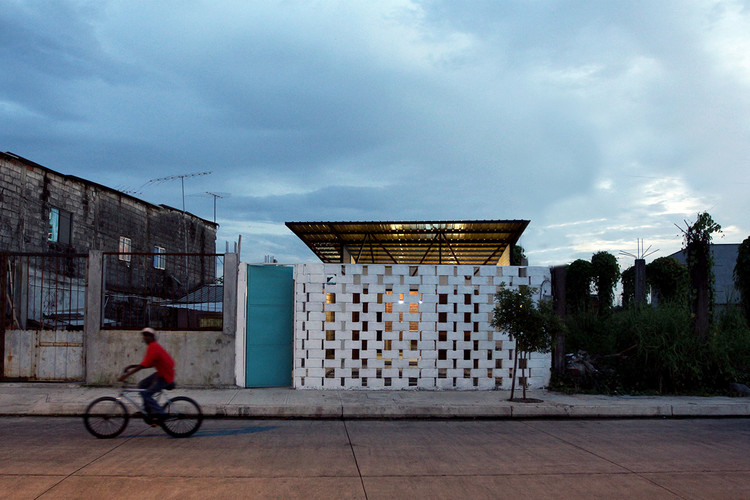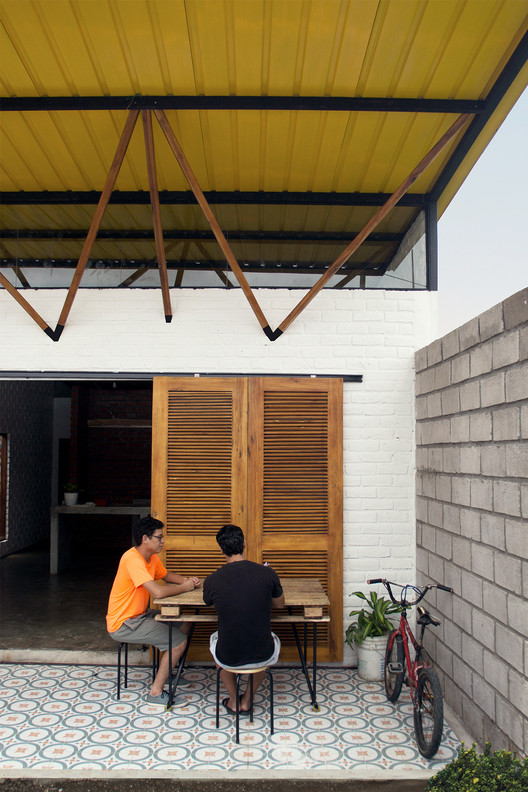
-
Architects: Natura Futura Arquitectura
- Year: 2016
-
Photographs:Cristhian Guerrero, Natura Futura

Text description provided by the architects. Tradition as strategy and place as resource
Located in the city of Babahoyo, Provincia de los Ríos, Ecuador, House for someone like me is built in a young ans highly vulnerable neighborhood, with security problems, population growth, new constructions and neighborhood individuality.

Vero, the owner, a young entrepreneur and mother of two children, manages her own business downtown, she sells fruits and vegetables. We propose a house that makes the best use of the site 7x20 meters. The proposal within the minimum site includes 2 bedrooms (one with bathroom), a public area that consists of a dining room, living room, kitchen, bathroom, and service courtyard.


Ecuador has a total population of 14'483.499 inhabitants (INEC), approximately 40% are employed and make around 1 and 3 minimum wages. For their ability to pay, workers have access to housing that ranges from $ 20,000 to $ 30,0000 dollars. Within the economic framework in the country there is now a bond for urban social housing, with credit for the builder and the owner of up to $ 30,000, within this range we propose to define a house than can expand in the future and become a business, based on a participatory process generating positive impacts through different strategies such as the application of principles of sustainable design, use of natural and local materials with low embodied energy and participation of local labor.

Its materiality consists of basic types of enclosures, using composition as a tool for creating different types. It is built with masonry concrete blocks with overlap, entirely raw bricks, doors and windows of traditional archetypes in wood and metal, large eaves in response to the tropical climate of the region.

To promote dialogue with the outside, the living room doors fold entirely, becoming a space of connection and convergence of activities. The composition of the enclosure seeks to create, through openness and visual relations, to enhance the sense of belonging, acquired security, community relations, situations of proximity, trust and care that are generated at the neighborhood level and encourage neighborly relations.

Architecture that incites play and reflection on the way we question the possibility of a solution of the city closer to reality.
























